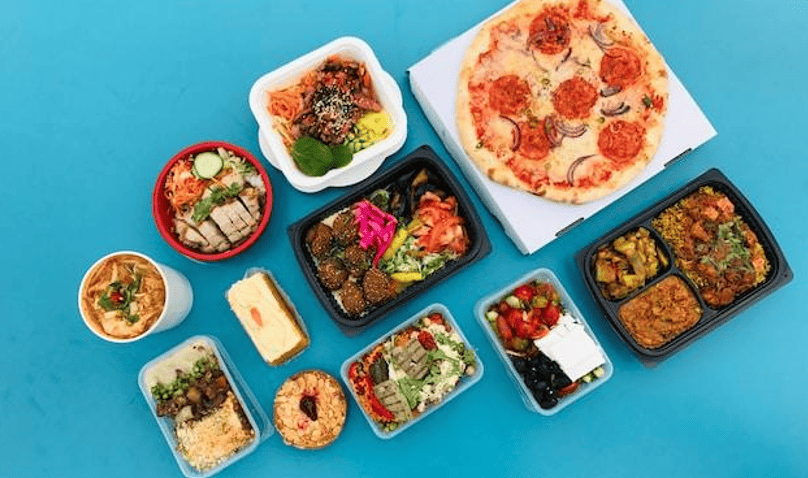
The modern world heavily relies on processed food. Take a stroll down a grocery store aisle, and you’ll find numerous food products, each separated from you by a mere layer of packaging. Despite its prevalence, many individuals overlook the importance of food packaging materials, seeing them merely as disposable items. However, these materials serve a critical function. The history of food packaging materials is extensive. In this piece, we will delve into the various types of food packaging materials available today.
Polyethylene
High-density polyethylene (HDPE) and low-density polyethylene (LDPE) are popular packaging materials. This is thanks to their physical and chemical attributes, making them suitable for virtually all food items.
Various polyethylene packaging subcategories exist, including HDPE, PET, and LDPE. Of these, PET or Polyethylene Terephthalate is the most prevalent, commonly used in packaging soft drinks, milk, and other beverages.
The advent of PET bottles primarily influenced the shift from glass to plastic in beverage packaging. Glass containers posed challenges for shipping due to their weight and fragility, increasing the risk of product loss. Check out the comparison by TDI Packsys to know more about PE and PET plastics and get the best packaging material.
The use of glass bottles for packaging water solutions, juices, or syrups could result in food wastage if the glass breaks, leading to product loss. Plastic bottles, on the other hand, mitigate such risks, prompting food manufacturing companies to widely substitute glass bottles with PET containers.
Plastic Bottles
You’ll encounter plastic bottles in nearly all retail settings. These are transparent containers, complemented with a plastic lid. The lid, once unscrewed, can be put back on to keep any unused product.
If you’ve ever consumed water from a bottle, then you’re no stranger to this common packaging medium. Plastic bottles are predominantly used to house beverages and various other drinks. While most plastic bottles are recyclable, they frequently find their way to landfills due to unstripped labels and adhesives or food contamination that occurs during the single-stream recycling process.
Notwithstanding the public’s growing apprehensions about the environmental consequences of plastic, these containers continue to enjoy immense popularity among millions of consumers worldwide for their beverage storage needs.
Glass Containers
Glass serves many functions and provides numerous advantages in our everyday lives. This reusable, recyclable, and robust material is also simple to clean and ideal for portable food storage. Examples of glass food and beverage containers include water bottles and bento boxes.
However, the inability of glass lids to be leak-proof makes them less suitable for containers that need to be taken to locations like work, school, or on a trip. Most of these mobile glass food containers employ plastic lids with a snap-lock feature and a silicone seal, or bamboo lids that can serve as convenient cutting boards when needed.
When selecting lids, opt for those without bisphenol-A, a recognized endocrine disruptor linked to infertility in both men and women and tumor formation. Provided they don’t shatter, these containers can last 3.5 times longer than their plastic counterparts and can be recycled once no longer in use, thereby lessening the environmental damage caused by plastic waste.
Boxes/cartons
The terms boxes and cartons are often used interchangeably. Similar to boxes, cartons are made from corrugated fiberboard and serve as transportation vessels for food items. There are four main types within the category of food packaging cartons. The egg carton is one of the most recognizable, designed specifically to protect eggs during transit.
Aseptic cartons form another type, often used for items like milk, juice, and soup. Folding cartons represent a third sub-category; these start as flat corrugated fiberboard pieces before being assembled by the food producer. Finally, there are gable tops, typically used for milk or juice, which need their top gables to be pinched and pulled for opening.
Endnote
Packaging for food that is derived from petroleum builds up in the environment and presents a multitude of health dangers, including metabolic complications and even the potential for cancer. While it might not be feasible to totally eliminate the use of these plastics, the selection of eco-friendly food packaging which is biodegradable, less harmful, and recyclable serves as a significant stride in reducing the damaging impacts of plastics on both personal health and the environment.
NutriFusion
NutriFusion develops all‐natural fruit and vegetable powders that are nutrient dense for when you do not have access to fresh produce…and even when you do to improve your vitamin intake. Sourcing only whole, non-GMO foods, NutriFusion offers consumers a concentrated micronutrient and phytonutrient-rich food ingredient blends. With a farm-to-table philosophy, NutriFusion’s proprietary process stabilizes the nutrients from perishable fruits and vegetables, allowing a longer shelf life and access to vital nutrients.
NutriFusion fruit and/or vegetable powders are for use in foods, beverages, supplements, and pet foods.
NutriFusion can help! Visit us at www.nutrifusion.com.


